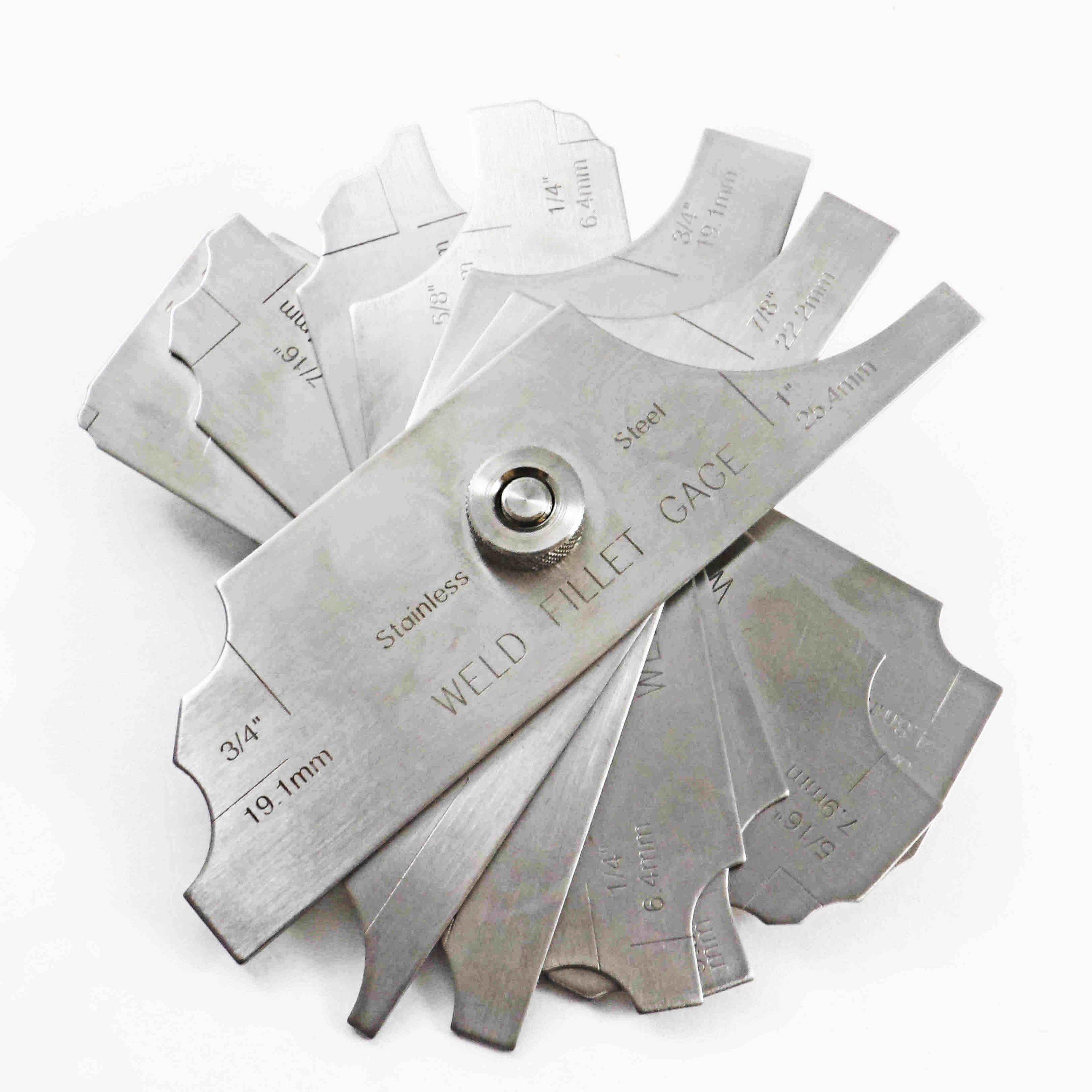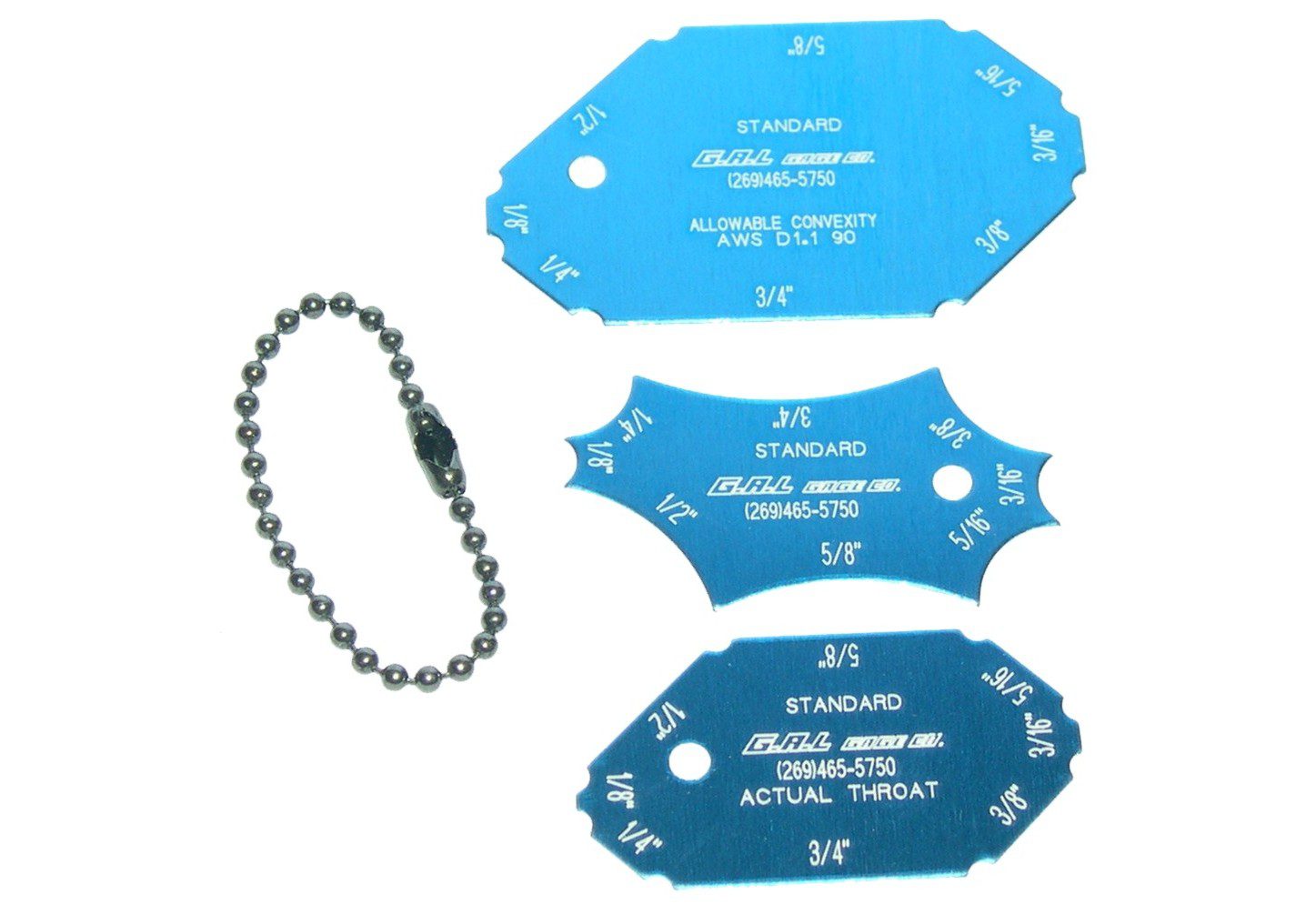How to Accomplish Accuracy with Gauge Fillet Welds in Your Jobs
Ingenious Techniques to Fillet Weld Evaluation and Screening: Enhancing Weld Quality and Compliance Requirements
In the realm of welding, the top quality and stability of fillet welds play a critical duty in ensuring the structural soundness and reliability of different industrial components. With the consistent drive for enhanced effectiveness and conformity with rigorous criteria, the exploration of ingenious methods to fillet weld evaluation and screening has actually ended up being critical. As industries advance, the conventional approaches may no more be adequate in fulfilling the needs of modern welding applications (Gauge Fillet Weld). By accepting advanced innovations and methods, a new perspective of possibilities arises in the realm of weld top quality analysis and adherence to conformity criteria.
Advanced Non-Destructive Screening Approaches
Using cutting edge modern technologies, progressed non-destructive screening techniques play a vital role in guaranteeing the stability and quality of fillet welds. These approaches, such as phased array ultrasonic testing (PAUT) and magnetic particle screening (MPT), offer thorough insights into the weld's interior framework without causing any type of damage to the product. PAUT, for example, uses several ultrasonic components to inspect the weld from numerous angles, offering a detailed visualization of potential flaws like lack of blend or splits.
Likewise, MPT works in detecting surface-breaking defects by using a magnetic area and iron fragments to the weld location. This method is specifically beneficial for recognizing gaps that might endanger the weld's strength. By using these innovative non-destructive screening techniques, weld examiners can precisely assess the high quality of fillet welds, making sure compliance with sector standards and regulations. The ability to find flaws beforehand not only enhances weld quality yet likewise stops pricey rework or failings in architectural honesty, underscoring the relevance of these cutting-edge screening methods in welding inspections.
Robotics and Automation in Assessment

The assimilation of robotics and automation has changed the evaluation process for fillet welds, enhancing effectiveness and precision in quality evaluation. Robotics provide exact control and repeatability in checking welds, making sure trusted and constant results. Automated systems can be set to comply with particular inspection courses, making sure comprehensive insurance coverage of welds and lowering the danger of human error.
Robot examination systems geared up with sophisticated sensors can identify and gauge weld functions with high accuracy, supplying detailed information for evaluation. These systems can recognize problems such as cracks, absence of fusion, and porosity, making it possible for timely restorative activities to be taken. In addition, robotics and automation enable real-time data collection and analysis, providing instant responses to drivers and assisting in fast decision-making processes.
Additionally, the use of robotics and automation in fillet weld evaluation boosts overall efficiency by reducing inspection times and increasing evaluation throughput. By streamlining the inspection procedure, producers can ensure weld top quality and conformity criteria are met effectively, ultimately bring about cost savings and improved product quality.
Utilizing Expert System for Evaluation
Synthetic knowledge plays an essential role in improving the performance and precision of evaluation in fillet weld examination processes. AI algorithms can quickly process substantial amounts of information from weld assessments, identifying flaws or disparities that might be testing to identify with the naked eye.
In addition, AI systems can pick up from previous evaluation data, continuously boosting their capacity to determine potential defects and inconsistencies in fillet welds. This adaptive understanding capability improves the overall high quality control process, decreasing the likelihood of human error and guaranteeing that welds fulfill the needed requirements. By integrating expert system right into fillet weld evaluation, sectors can achieve higher levels of efficiency, uniformity, and compliance in their assessment techniques.
Portable Devices for On-Site Inspection
Enhancing field assessment effectiveness, the fostering of mobile devices changes on-site analysis procedures for fillet welds. These devices offer flexibility and convenience, allowing assessors to conduct complete assessments in different places, including remote or tough settings. Mobile tools such as ultrasonic testing tools, magnetic fragment assessment devices, and digital radiography systems provide real-time information and high-resolution imaging capacities, enabling quick decision-making and immediate responses on weld quality.
One substantial benefit of portable devices is their capability to streamline examination treatments, minimizing downtime and improving overall productivity - Gauge Fillet Weld. Inspectors can conveniently deliver these devices to different work sites, removing the requirement for transferring heavy equipment or components to off-site centers. Additionally, the transportability of these tools advertises cost-effectiveness by lessening transportation expenditures and accelerating examination timelines
Furthermore, the usage of portable devices for on-site evaluation promotes positive quality assurance procedures, as inspectors can immediately identify and deal with any kind of potential welding flaws or disparities. By including these cutting-edge modern technologies into on-site examination methods, welding experts can ensure compliance with sector standards and improve weld top quality, ultimately resulting in boosted architectural integrity and security in different welding applications.
Assimilation of Data Management Solution

Having actually enhanced on-site evaluation processes via the usage of portable devices, the following phase entails the seamless assimilation of data monitoring systems to additionally enhance performance and information analysis capabilities in fillet weld examination and screening. By integrating information administration systems right into the assessment process, companies can streamline information collection, storage, and evaluation. This integration enables for real-time monitoring of weld high quality, immediate identification of issues, and timely decision-making to fix any type of issues that might develop during the examination procedure.
The integration of information management systems allows seamless communication in between various navigate to this site stakeholders included in the assessment process, fostering cooperation and boosting general high quality control steps. Ultimately, the assimilation of information management systems offers to elevate the standards of fillet weld inspection and screening, making sure compliance with sector guidelines and enhancing weld top quality.
Final Thought
To conclude, cutting-edge strategies to fillet weld assessment and testing have actually substantially enhanced weld top quality and compliance criteria. Advanced non-destructive testing approaches, robotics, automation, expert system, mobile devices, and data management systems have transformed the method weld assessments are performed. By using these modern technologies, markets can make sure that welds fulfill the required high quality criteria and policies, eventually enhancing total efficiency and safety in welding procedures.

Having maximized on-site assessment procedures via the use of portable tools, the following phase involves the smooth integration of data management systems to further boost effectiveness and data evaluation capacities in fillet weld assessment and testing. Eventually, the combination of information administration systems offers to raise the standards of fillet weld inspection and Visit This Link screening, guaranteeing conformity with market regulations and enhancing weld top quality.
